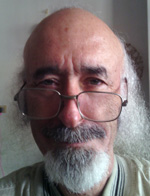By Dan Bloom

CHIAYI CITY, Taiwan — In a personal blog post I published in September I asked my readers if the current bestseller The Tattooist of Auschwitz, a Holocaust sex and romance “novel” concocted by a well-intentioned but somewhat nervy non-Jewish screenwriter in Australia, was ever going to be called in question by literary critics and Holocaust historians in North America or Europe. Not one newspaper in conservative, don’t-rock-the-boat Australia would touch the brouhaha that was unfolding on social media.
But with a brief email I tipped off the Sydney news bureau chief of the New York Times, and he assigned a Melbourne reporter to investigate the truthfuless of Heather Morris’s book. As a result, Christine Kenneally interviewed Morris and several other people connected with the book and her article was published on November 8 in the international edition of the Times. She delivered a one-two punch to the alleged “based on a true story” novel, as the cover’s tagline and the publisher’s promotional material proclaimed and now there is some doubt about the book’s future. Already a movie project based on the novel is worried what the next step will be after the negative publicity in the Times when viral on social media.
It turns out, as Kenneally reveals in a meticulously detailed report says, the so-called “true story” was not so ”true” in all of its masterful telling.
The New York Times article is still making waves in literary and publishing circles around the world, and the fallout from the news story is sure to put the chances of a movie being made of in limbo. There are too many questions now surrounding the authenticity of Morris’ book, and she is feeling the pressure. Still, she has not replied publicly to the charges in the Times article, and neither have any of her partner publishers in Australia, New York, Canad,a or London. With over 600,000 copies sold worldwide accompanied by glowing reviews online by delighted readers who for the most part did not question any of trutfulness of the story Morris concocted, the book cannot be cancelled or recalled.
Morris initially wrote the story as a movie screenplay, but later turned it into a mushy Holocaust romance novel. That’s where her troubles began. She took liberties with an elderly Holocaust survivor’s memories that she never should have taken, and now the criticism over the novel’s backstory is going to point the finger at both Morris and her Australian editor Angela Meyer. They have a lot of explaining to do now in the wake of the expose. It’s not going to be a pretty picture when the dust settles.
In September, I tried to warn both Morris and Meyer of the trouble they were heading toward, but neither of them responded to my emails, Facebook messages or tweets. Stonewalling gets you nowhere, as the two have now learned. The New York Times dared to go where not one local newspaper or literary magazine in Australia would go.
“In the ‘Additional Information’ section of the book, Morris writes that 34902 was in fact Furman’s number,” Kenneally reported. Furman was Jewish Auschwitz tattooist Lali Sokolov’s wife in real life and in the book.“ But as it turns out, it’s not. In a 1996 interview with the USC Shoah Foundation, Furman said her number was 4562. Other evidence from her own account and from the archives at the Auschwitz-Birkenau Memorial and Museum supports her claim.”
There’s more damning evidence Kenneally reports.
“Likewise Furman’s arrival date [at the Nazi concentration camp] is said to be April 13, 1942. But it’s not possible for a woman assigned the number 34902 to have arrived at Auschwitz on that date or even in that year. A woman entering Auschwitz at that time would have had a four-digit number,” Kenneally reported.
Most damning perhaps is the New York Times assertion that while much of the interest in, and marketing of, the bestselling and heavily promoted book focused on the so-called ”true story” the cover and savvy PR material says it was based on, there is confusion about which stories in the novel are true and which are not.
“Morris said that the tattoo scene where Sokolov so momentously saw Furman for the first time really occurred. But interviews with Sokolov and Furman from the 1990s, and with their [59-year-old ] son Gary [in Australia] recently, provide no support for that claim,” the New York Times reported.
Morris’ book is in trouble now. It might be recalled, with no future editions printed or sold. The movie option for the book might very well be cancelled. Telling a big fat white lie, even if it is to turn an elderly Holocaust survivor’s manipulated memories into a bestseller with the best of intentions, is to spit on the graves and memories of the 6 million Jews who died in the Holocaust.
Read the book, or read the thousands of reviews online. Did Sokolov and his wife Gita Furman,both dead now and unable to speak for themselves, really have wild sex inside the concentration camp, as the novel alleges? Did Sokolov really meet his wife when she entered the camp on the first day, he 25 and she 18, as he inked a tattoo number on her arm? And did he really say to her in the camp, as Morris alleges, “I tattooed your arm but you tattooed my heart”?
Romance, schmomance. Holocaust novels deserve better.
*
Bloom is a freelance writer based in Chiayi City, Taiwan. He may be contacted via dan.bloom@sdjewishworld.com
Update: The Auschwitz Museum says on its Twitter page: ”The novel is a moving story but due to many number of factual errors it can’t be recommended as a valuable reading to understand the history of the camp.”